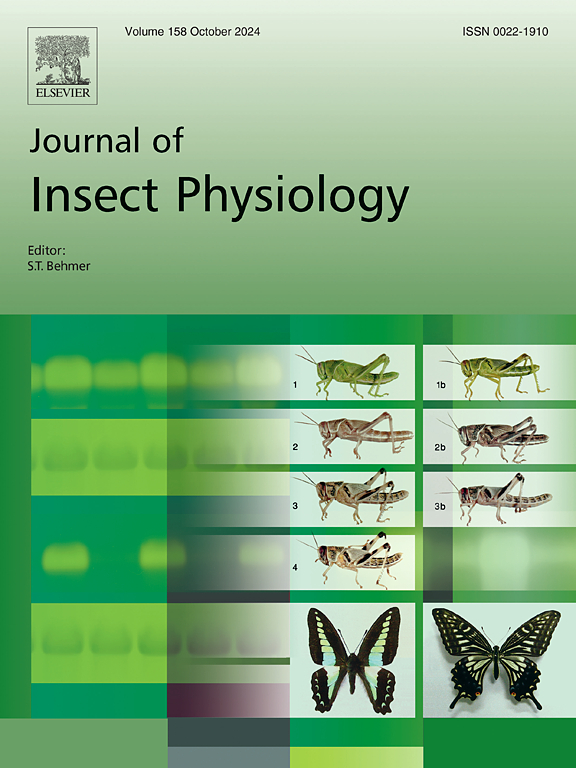Adult brain neurogenesis does not account for behavioral differences between solitary and social bees
IF 2.3
2区 农林科学
Q1 ENTOMOLOGY
引用次数: 0
Abstract
In many taxa, increasing attention is being paid to how group living shapes the expression of brain plasticity and behavioural flexibility. In eusocial insects, the lifelong commitment of workers and queens to a reproductive or non-reproductive caste is accompanied by a loss of behavioural totipotency, and often, by the expression of a limited behavioural repertoire in workers due to their specialisation. On the other hand, individuals of solitary species have a broader behavioural repertoire as they have to perform all the tasks themselves. This raises the question of whether solitary and social insects differ in their levels of brain plasticity. One mechanism found in both invertebrates and vertebrates to contribute to brain plasticity is adult neurogenesis. It is a mechanism by which adult-born neurons are generated, differentiated and functionally integrated in the brain circuits during adulthood. In this study, we compared the solitary bee Osmia bicornis and the eusocial bee Apis mellifera. We focused on the mushroom bodies which are higher-order integration centres in the insect brain. Based on their known behavioural repertoire, our prediction was that both solitary and social bees would exhibit neurogenesis in the brain until the pupal stage, but that this capacity would persist only in adult solitary bees. However, our results do not validate this prediction, as they indicate that no cells are produced in the mushroom bodies or other areas of the adult solitary bee brain.

成年的脑神经发生不能解释独居蜜蜂和群居蜜蜂之间的行为差异。
在许多类群中,人们越来越关注群居生活如何影响大脑可塑性和行为灵活性的表达。在群居昆虫中,工蚁和蚁后终生致力于生殖或非生殖种姓,伴随着行为全能性的丧失,工蚁往往由于其专业化而表现出有限的行为剧目。另一方面,独居物种的个体由于必须自己完成所有的任务,因此其行为剧目范围更广。这就提出了一个问题:独居昆虫和群居昆虫的大脑可塑性水平是否不同。在无脊椎动物和脊椎动物中发现的一种有助于大脑可塑性的机制是成体神经发生。它是一种机制,通过这种机制,成体出生的神经元在成年期生成、分化并在功能上整合到大脑回路中。在这项研究中,我们比较了独居蜂茭白和群居蜂Apis mellifera。我们重点研究了蘑菇体,它是昆虫大脑中的高阶整合中心。根据已知的行为剧目,我们预测独居蜂和群居蜂的大脑在蛹期之前都会出现神经发生,但只有成年独居蜂才会持续存在这种能力。然而,我们的研究结果并没有验证这一预测,因为研究结果表明,成年独居蜂大脑的蘑菇体或其他区域没有产生任何细胞。
本文章由计算机程序翻译,如有差异,请以英文原文为准。
求助全文
约1分钟内获得全文
求助全文
来源期刊

Journal of insect physiology
生物-昆虫学
CiteScore
4.50
自引率
4.50%
发文量
77
审稿时长
57 days
期刊介绍:
All aspects of insect physiology are published in this journal which will also accept papers on the physiology of other arthropods, if the referees consider the work to be of general interest. The coverage includes endocrinology (in relation to moulting, reproduction and metabolism), pheromones, neurobiology (cellular, integrative and developmental), physiological pharmacology, nutrition (food selection, digestion and absorption), homeostasis, excretion, reproduction and behaviour. Papers covering functional genomics and molecular approaches to physiological problems will also be included. Communications on structure and applied entomology can be published if the subject matter has an explicit bearing on the physiology of arthropods. Review articles and novel method papers are also welcomed.
 求助内容:
求助内容: 应助结果提醒方式:
应助结果提醒方式:


